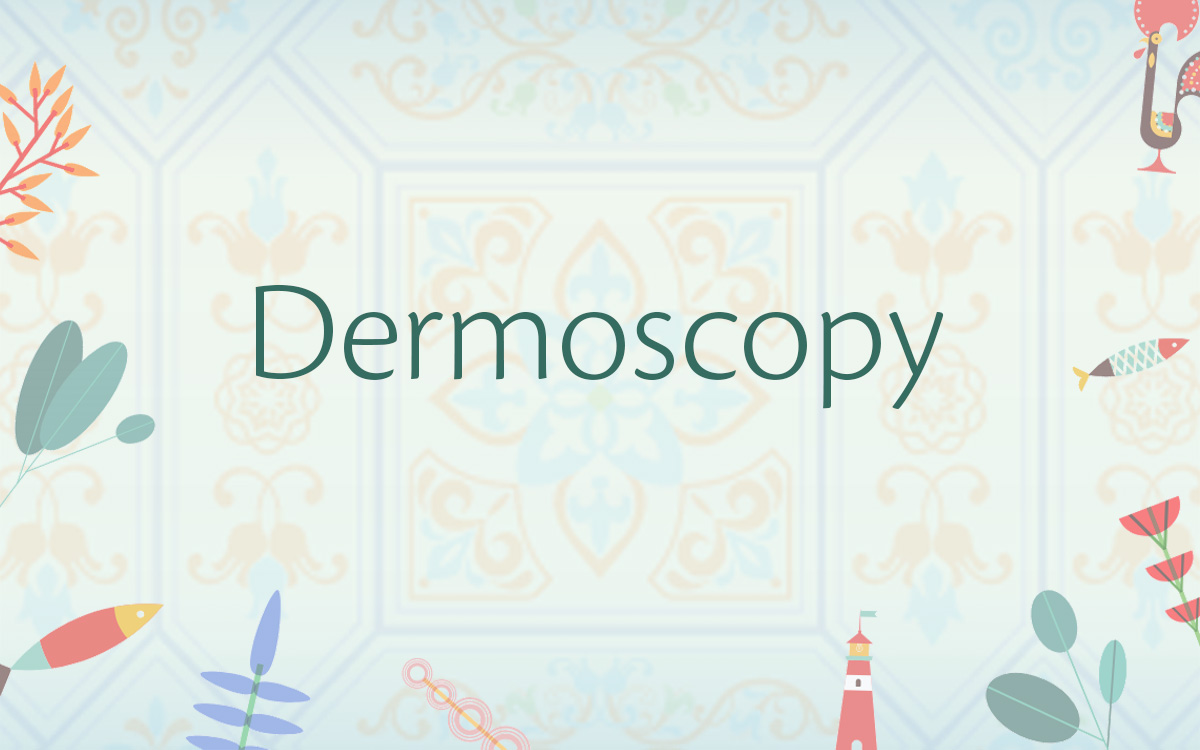Dermoscopy is a useful non-invasive technique that has been extensively investigated, with widespread use in dermatological day to day practice for the assessment of skin, hair and nail disease.
Histology is the diagnostic gold standard for nail apparatus disease and pigmentation. However, onychoscopy is an important auxiliary method to take into account, given its non-invasiveness, low cost and versatility. Its role as an adjuvant for the evaluation and diagnosis of nail inflammatory, infectious and tumoral disease is well established. Of particular importance is the examination of nail dyschromia (particularly melanonychia, with emphasis on nail apparatus melanoma diagnosis), also showing relevance for the differential between non-melanocytic nail tumors, bacterial and fungal infection and inflammatory disease.
Differential diagnosis of pigmented facial lesions remains one of the most challenging clinical scenarios in dermatology. There is an overlap of clinical, dermoscopic and, in many cases, also pathological features between lentigo maligna (LM) and benign pigmented skin lesions, mostly including pigmented actinic keratoses and macular seborrheic keratoses. The extensively studied dermatoscopic criteria of LM seem to better work in advanced stages of the disease, whilst in early stages and in lesions small in size there is still a diagnostic gap. A recently introduced dermoscopic method for the diagnosis of early LM, named “inverse approach”, is becoming more and more popular. The inverse approach suggests that the absence of dermoscopic patterns of pigmented actinic keratosis and solar lentigo/flat seborrheic keratosis in a lesion, independently of the recognition or not of LM criteria, is enough to raise the suspicion of LM. In the latter scenario, a diagnostic biopsy should always be performed.
In the field of dermoscopy it is difficult, for a beginner, to choose among the different algorithms. If all the algorithms and all the methods are equally accurate, which they are, then the best way to start is to choose the simplest approach, which certainly is represented by pattern analysis. Pattern analysis is simple because it is based on simple terminology, and it is also complete, because it can be used for pigmented and non-pigmented lesions and for all anatomic sites.
This does not mean that dermoscopy is always simple. It can be extremely difficult and sometimes it is not possible to come to a specific diagnosis with certainty. But even if the diagnosis is difficult, the descriptions should be easy and coherent. Pattern analysis is a bottom-up method that helps you to learn dermoscopy in a structured way and to reach a diagnosis even when pattern recognition fails.
Finally, dermatologists may also face difficult cases, with lesions that are morphologically inconspicuous, both clinically and dermoscopically, requiring the use of advanced dermoscopy.
In these instances only the use of specific rules will allow one not to miss a melanoma. The main rule is to combine all the information coming from the clinical and dermoscopic examination of the patient. Age is important, as well as the location of the lesion on the body, the palpability, the presence of pigmentation and the morphologic comparison with other eventual lesions of the same patient. Putting everything together will enrich the dermatologist’s ability to perform a proper differential diagnosis and to manage the given lesion.
Session speakers
- Zoe Apalla – Thessaloniki, Greece
- Giuseppe Argenziano – Naples, Italy
- Harald Kittler – Vienna, Austria
- Andre Lencastre – Lisboa, Portugal





